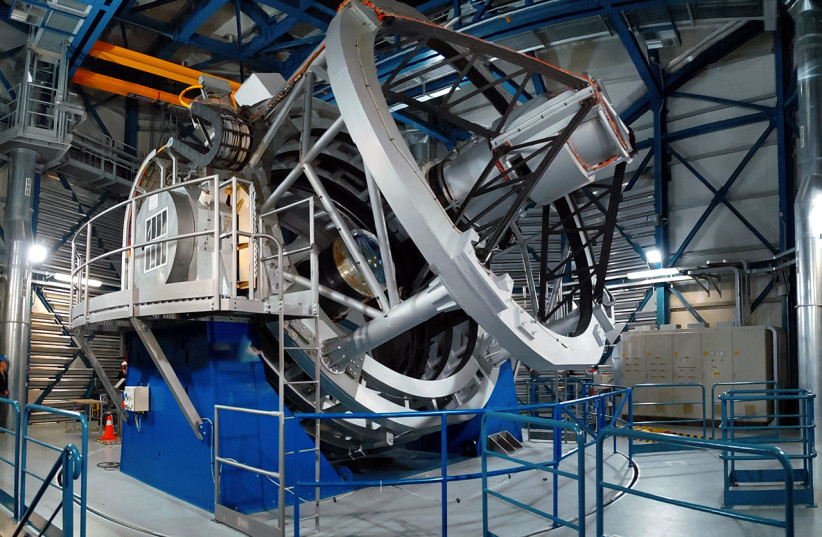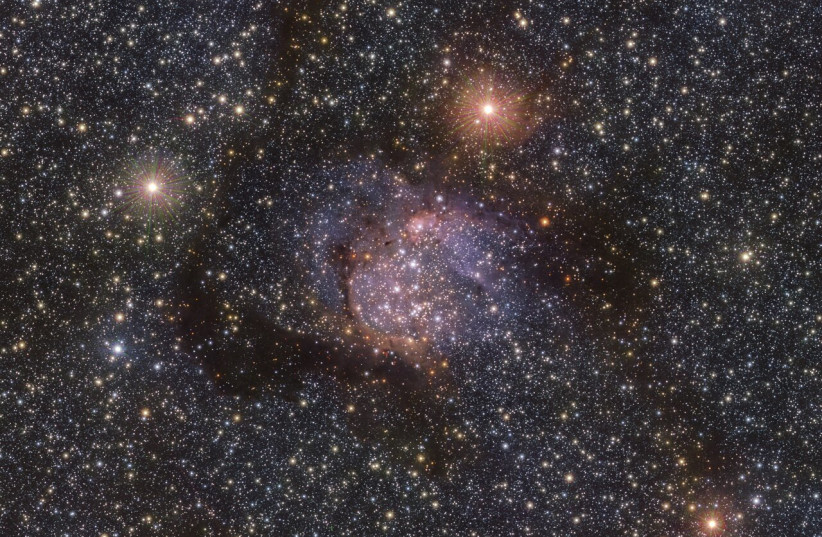ESO scientists capture new stunning image of stellar nursery
The nebula in question is known as the Sh2-54 nebula and is one of the many awe-inspiring cosmic structures located within the tail of the snake constellation Serpens.
Scientists at the European Southern Observatory (ESO) have taken a stunning new image of a distant nebula, birthplace of stars, hidden away in the literal tail-end of the snake constellation in space.
The nebula in question is known as the Sh2-54 nebula and is one of the many awe-inspiring cosmic structures located within the tail of the snake constellation Serpens.
Other notable astronomical objects in this area of space include the Eagle Nebula and the Omega Nebula.
What is a nebula?
A nebula is essentially a stellar nursery, meaning it is where new stars are formed.
These areas are essentially just massive clouds of gases and dust, all of which come together to help create new stars.

But now, thanks to advances in telescope technology, scientists can take a closer look at nebula like the Sh2-54 nebula, located some 6,000 light years away from the Earth, than ever before.
In particular, the ability to get such vivid images of the nebula is because of advances in infrared scanning.
Nebulae tend to absorb visible light thanks to the clouds of dust. As such, they can be hard to see. But infrared light can still pass through dust clouds – it just isn't something human eyes are capable of perceiving.
Advances in telescopes let scientists see more of space than ever before
But with infrared scannings, such as with the 67-million-pixel camera on the Visible and Infrared Survey Telescope for Astronomy (VISTA) at the ESO's Paranal Observatory in Chile, which took the images of the Sh2-54 nebula, scientists can now take closer and more detailed looks at the stellar nursery.
Observations like this are important as they help scientists learn more about the creation of new stars and the many still-mysterious functions in our universe.
And with further advancements in telescope technology, more discoveries and images like this will only continue to happen.
NASA launched the James Webb Space Telescope in 2021, and since then, this highly advanced telescope has taken numerous breathtaking images, as well as provided valuable scientific data for researchers. This is thanks to the incredible technologically-advanced tools at its disposal, which let it see farther and in greater detail than any space telescope before it.
Giant Magellan Telescope rendering at night (credit: WEIZMANN INSTITUTE OF SCIENCE)
Another advanced space telescope in development in Chile, the Giant Magellan Telescope, is also expected to vastly advance our understanding of space with new, even better images.
Israel is also working on a space telescope of its own, ULTRASAT, which is being developed at the Weizmann Institute of Science in Rehovot and is set to launch sometime in 2025.
ESOcast 154 Light: ALMA Reveals Inner Web of Stellar Nursery
PLEASE RECOMMEND THIS PAGE & FOLLOW THE SPUTNIKS ORBIT AT HTTPS://DISQUS.COM/HOME/FORUM/THESPUTNIKSORBIT-BLOGSPOT-COM




No comments:
Post a Comment